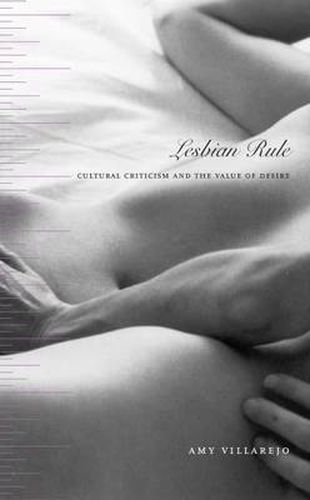Readings Newsletter
Become a Readings Member to make your shopping experience even easier.
Sign in or sign up for free!
You’re not far away from qualifying for FREE standard shipping within Australia
You’ve qualified for FREE standard shipping within Australia
The cart is loading…






With hair slicked back and shirt collar framing her young patrician face, Katharine Hepburn’s image in the 1935 film Sylvia Scarlett was seen by many as a lesbian representation. Yet, Amy Villarejo argues, there is no final ground upon which to explain why that image of Hepburn signifies lesbian or why such a cross-dressing Hollywood fantasy edges into collective consciousness as a lesbian narrative. Investigating what allows viewers to make an image or narrative work as lesbian, Villarejo presents a theoretical exploration of lesbian visibility. Focusing on images of the lesbian in film, she analyzes what these representations contain and their limits. She combines Marxist theories of value with poststructuralist insights to argue that lesbian visibility operates simultaneously as an achievement and a ruse, a possibility for building a new visual politics and a way of rendering static and contained what lesbian might mean. Integrating cinema studies, queer and feminist theory, and cultural studies, Villarejo illuminates the contexts within which the lesbian is rendered visible.Toward that end, she analyzes key portrayals of the lesbian in public culture, particularly in documentary film. She considers a range of films–from documentaries about Cuba, Shanghai and lesbian pulp fiction to The Brandon Teena Story, and, in doing so, brings to light a nuanced economy of value and desire.
$9.00 standard shipping within Australia
FREE standard shipping within Australia for orders over $100.00
Express & International shipping calculated at checkout
With hair slicked back and shirt collar framing her young patrician face, Katharine Hepburn’s image in the 1935 film Sylvia Scarlett was seen by many as a lesbian representation. Yet, Amy Villarejo argues, there is no final ground upon which to explain why that image of Hepburn signifies lesbian or why such a cross-dressing Hollywood fantasy edges into collective consciousness as a lesbian narrative. Investigating what allows viewers to make an image or narrative work as lesbian, Villarejo presents a theoretical exploration of lesbian visibility. Focusing on images of the lesbian in film, she analyzes what these representations contain and their limits. She combines Marxist theories of value with poststructuralist insights to argue that lesbian visibility operates simultaneously as an achievement and a ruse, a possibility for building a new visual politics and a way of rendering static and contained what lesbian might mean. Integrating cinema studies, queer and feminist theory, and cultural studies, Villarejo illuminates the contexts within which the lesbian is rendered visible.Toward that end, she analyzes key portrayals of the lesbian in public culture, particularly in documentary film. She considers a range of films–from documentaries about Cuba, Shanghai and lesbian pulp fiction to The Brandon Teena Story, and, in doing so, brings to light a nuanced economy of value and desire.